Title IX emerged from social and cultural shifts in the American gender order. Its legal ripples created controversy and pushback from many men who sat atop sport infrastructures from Little Leagues to the National Collegiate Athletic Association (NCAA). It has provided women and advocates of female sport participation with a legal tool to advance opportunity for girls and women in education and sport. Over time, many parents, educators, administrators and government leaders fell in step with its vision and ethic of fair play. Today, thanks to a growing body of research, the advocates for reform in sport and education increasingly base their claims and visions on evidence rather than myth or ideology. And it is out of these historical changes, knowledge production and celebration of its inception that the 2012 Title IX at 40: Progress and Promise—Equity for All conference was born. Download the full White Paper to learn how far we’ve come…and what work is left to do.
Progress and Promise: Title IX at 40, a White Paper
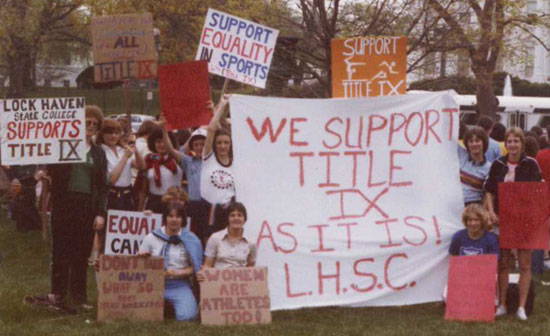
The Decade of Decline: Gender Equity in High School Sports
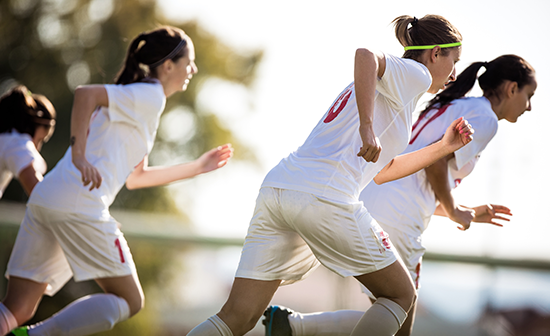
“The Decade of Decline: Gender Equity in High School Sports,” a study co-authored by Don Sabo, Ph.D., Director, Center for Research on Physical Activity, Sports & Health (CRPASH), D’Youville College, and Philip Veliz, Ph.D., Post-Doctoral Fellow, University of Michigan, analyzes data from the Department of Education’s Office for Civil Rights (OCR) Data Collection on girls’ and boys’ high school athletic opportunities between the 1999-2000 and 2009-10 school years. This is the second in the “Progress Without Equity” research report series.
Key findings from “The Decade of Decline: Gender Equity in High School Sports” include:
- Athletic participation opportunities expanded across the decade, but boys’ allotment grew more than girls. By 2009-10, 53 athletic opportunities were offered for every 100 boys, compared with 41 opportunities for every 100 girls.
- Despite the level of economic resources, the opportunity gap between girls and boys continued to increase. By 2010 girls participated in greater numbers than in the beginning of the decade; however, girls’ share of total athletic opportunities decreased across the decade as compared to boys’ share. During a decade of expanding athletic participation opportunities across U.S. high schools, boys received more opportunities than girls, and boys’ opportunities grew faster than those of girls.
- By 2009-10 boys still received disproportionately more athletic opportunities than girls in all community settings—urban, suburban, towns, and rural communities.
- In 2000, 8.2 percent of schools offered no sports programs, the percentage nearly doubled by 2010, rising to approximately 15 percent. Additionally, schools with disproportionately higher female enrollments (i.e., the student body is 56 percent female or higher) were more likely to have dropped interscholastic sports between 2000 and 2010.
- Seven percent of public schools lost sports programs between 2000 and 2010, while less than one percent added sports to their curriculum. Given this trend in the data, it is estimated that by the year 2020, 27 percent of U.S. public high schools (4,398 schools) would be without any interscholastic sports, translating to an estimated 3.4 million young Americans (1,658,046 girls and 1,798,782 boys) who would not have any school-based sports activities to participate in by 2020 if the trend continues.
Through this benchmark study, the SHARP Center hopes to inform and educate policy makers on the importance of ensuring that athletic opportunities are readily available to youth at the high school level. The Women’s Sports Foundation worked with the National Women’s Law Center (NWLC) to create relevant, evidence-based policy recommendations based on the report’s findings:
- The Office for Civil Rights should strengthen its enforcement of Title IX in secondary schools to ensure that girls receive equal opportunities to reap the many valuable benefits of playing sports.
- Federal policymakers should require high schools to publicly disclose gender equity data about their athletics programs.
- Urban schools, in particular, should redouble their efforts to increase the numbers of athletic opportunities that they provide to girls.
- All schools should have Title IX coordinators and should regularly conduct Title IX self-evaluations to ensure that they are complying with the law.
Female Athletes and Concussions
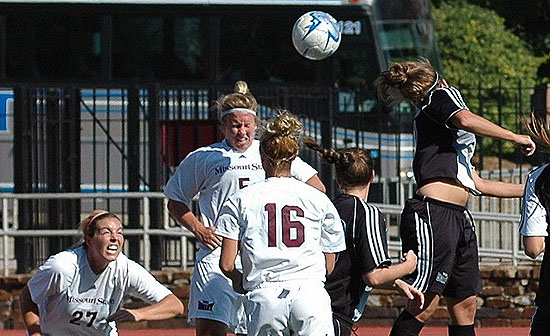
The number of sports related concussions appears to be increasing and there is a growing interest in sport related concussions (McKeever & Schatz, 2003). Because of the possibility of neurological damage, traumatic brain injuries are particularly serious and warrant attention. While much of the research on concussions focuses on men’s football and hockey, there is more analyses of concussions in women’s sport appearing. Obtaining sound data on the incidence of concussions is complicated by variability in reporting and diagnosis. Emerging research in prevention and training practices show that gender-conscious approaches to physical training and conditioning for female athletes help to reduce the likelihood of concussions.
Facts and Research Findings
- Females participating in high school sports now have a higher incidence rate of sport-related concussions than do males (Gessel et al., 2007; Powell & Barber-Foss, 1999; Covassin et al., 2003)
- Among women’s sports, the highest incidence of concussions occurs in soccer (Covassin et al., 2003; Gessel et al., 2007).
- In a ranking of high school and college sports on the basis of concussions as a percentage of all injuries, women’s soccer and basketball ranked highest, followed by football and men’s soccer (Gessel et al., 2007).
- In soccer and basketball, at both high school and collegiate levels females sustain higher rates of concussions than males (Hootman, Dick & Agel, 2007; Covassin et al., Gessel et al., 2007).
- Among collegiate ice hockey players, women sustain higher levels of concussions than men (Hootman, Dick & Agel, 2007).
- Younger athletes appear to be at increased risk for concussions. This may be the result of younger brains being more susceptible to traumatic brain injury but there is no conclusive evidence on the reasons for the increased susceptibility (Covassin et al., 2003; Gessel et al., 2007; McKeever & Schatz, 2003).
- Research on risk factors for concussions is at a preliminary stage. In attempting to explain the observed sex differences in concussion rates, attention is being directed to biomechanical, neuroanatomical and neuromuscular factors but little is known about this topic (Covassin et al. 2003; Gessel et al., 2007; McKeever & Schatz, 2003).
- There is need for a more widespread understanding of the potentially dangerous impart of concussions in sport (McKeever & Schatz, 2003)
Explore Further with Concussion Articles, Position Statements and Other Resources >>>
Covassin, T., Swanik, C. B., & Sachs, M. L. (2003). Sex differences and the incidence of concussions among collegiate athletes. Journal of Athletic Training, 38(3), 238-244.
Covassin, T., Swanik, C. B., & Sachs, M. L. (2003). Epidemiological considerations of concussions among intercollegiate athletes. Applied Neuropsychology, 10(1), 12-22.
Gessel, L. M., Fields, S. K., Collins, C. L., Dick, R. W., & Comstock, R. D. (2007). Concussions among united states high school and collegiate athletes. Journal of Athletic Training, 42(4), 495-503.
McKeever, C. K., & Schatz, P. (2003). Current issues in the identification, assessment, and management of concussions in sports-related injuries. Applied Neuropsychology, 10(1), 4-11.
Powell JW, Barber-Foss K. Traumatic brain injury in high school athletes. JAMA. 1999;282(10):958-963.
*Excerpted and adapted from Staurowsky, E. J., DeSousa, M. J., Ducher, G., Gentner, N., Miller, K. E., Shakib, S., Theberge, N., & Williams, N. (2009). Her Life Depends On It II: Sport, Physical Activity, and the Health and Well-Being of American Girls and Women. East Meadow, NY: Women’s Sports Foundation.
Progress Without Equity

This first-of-its-kind report on gender and high school sports participation, “Progress Without Equity: The Provision of High School Athletic Opportunity in the United States, by Gender 1993-94 through 2005-06,” flows from an analysis of high schools that is unprecedented in its national and historical scope. It uses merged data from the Civil Rights Data Collection and the Common Core of Data, which is collected by the National Center for Education Statistics.
The report examines gender differences in athletic opportunity in a nationally representative sample of 24,370 public four-year high schools across 1993-94, 1999-2000 and 2005-06. Three measures of the extent of athletic opportunity are documented including the number of athletic participation opportunities, the number of teams, and the number of sports. This report was authored by Don Sabo, Ph.D., Professor of Health Policy, D’Youville College, and Phil Veliz, M.S., University at Buffalo, the State University of New York.
The key findings in “Progress Without Equity” include:
- While high schools gradually increased their allocations of athletic participation opportunities between 1993-94 and 2005-06, progress toward closing the gender gap slowed after 2000.
- Boys received a larger proportion of athletic participation opportunities than girls did for each school year in all communities (i.e., urban, suburban, town, and rural). The lowest percentages of athletic participation opportunities occurred in urban schools, whereas the highest percentages were issued in rural schools.
- Schools with greater economic resources provided more athletic participation opportunities for their students—both girls and boys—than their less fiscally sound counterparts.
- Girls were provided proportionately fewer athletic participation opportunities than boys during each school year and in all geographic regions (i.e., Northeast, Midwest, South and West.
This report provides educators and policymakers at the national and state levels with new and more accurate information. The data presented here reflect the provision of athletic opportunities to U.S. girls and boys during an historical period in which the influence of Titles IX was growing. The results show that while some progress was made toward expanding the opportunity sector of interscholastic sports to include more girls between 1993-94 and 2005/06, gender equity was not achieved.
Her Life Depends on It II
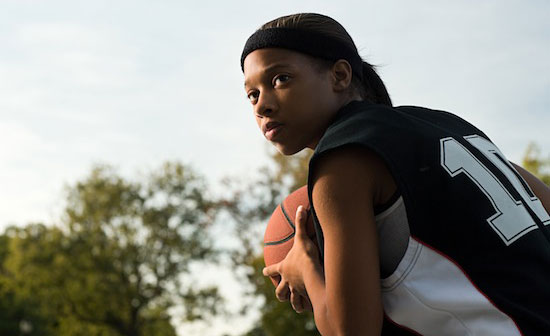
In December 2009 the Women’s Sports Foundation released a new and expanded comprehensive review of its essential “Her Life Depends On It” report, first released in 2004. The benchmark 2009 review draws critical conclusions that further emphasize the vital roles that sports play in the physical and social health of girls and women. The report is compiled from more than 2,000 studies examining women’s athletics and health, including hundreds of new studies conducted in the five years since the last report was released.
Go Out and Play – Athletic Participation and Children’s Well-Being
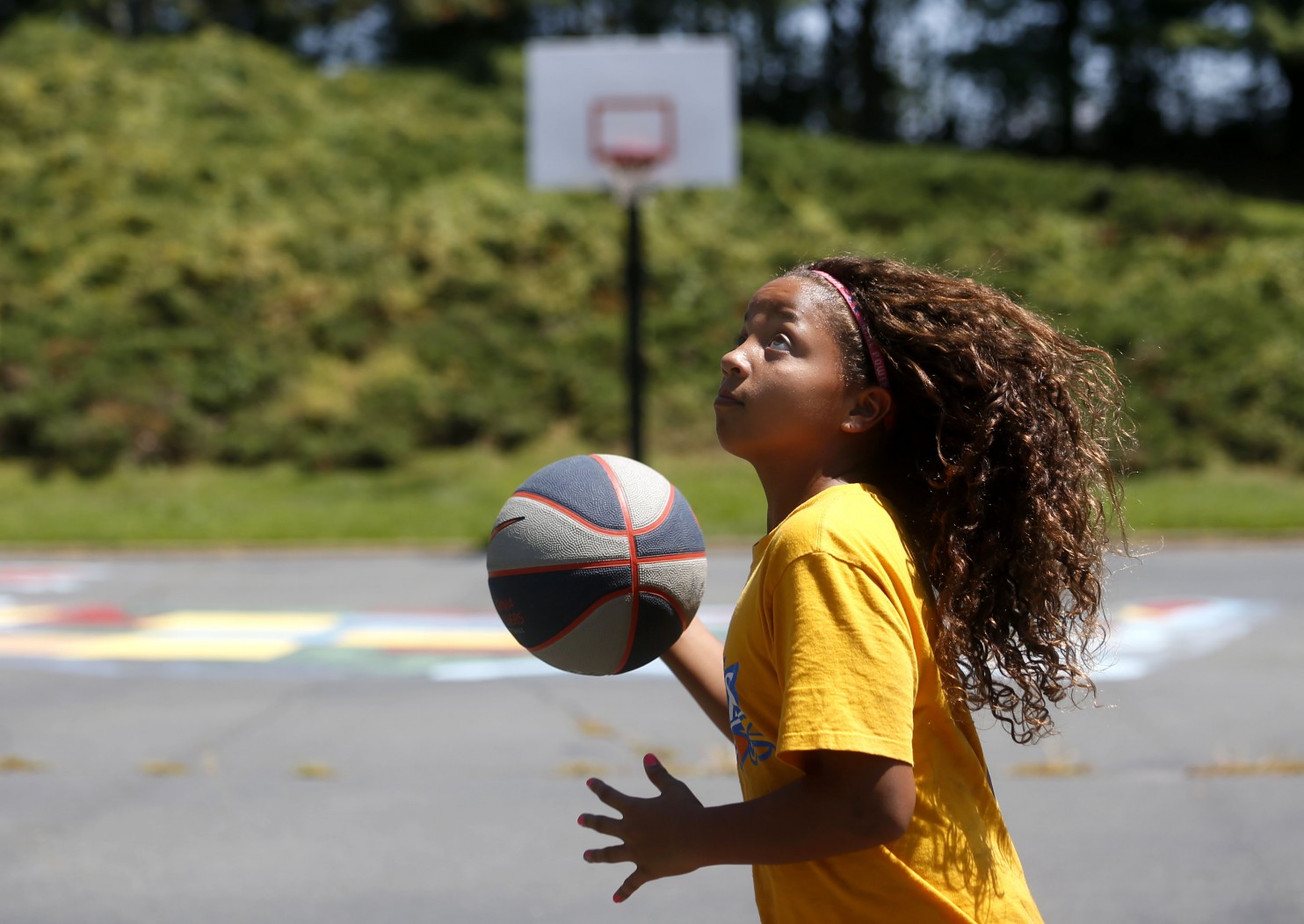
To assist readers who have specific interests, the WSF has created a series of research briefs from Go Out & Play: Youth Sports in America.
Go Out and Play: Youth Sports in America is a comprehensive research report that covers a range of topics including how athletic participation impacts children’s health. The report explored a variety of ways that sports involvement intersects with the overall development of girls and boys. Here “health and well-being” are broadly defined to include physical health, emotional health and successful social adaptation in school. The results show that for many U.S. children, athletic participation contributes to general health and body esteem, healthy weight, social relationships, higher quality of life, and educational achievement.
Who’s Playing College Sports: Money, Race and Gender
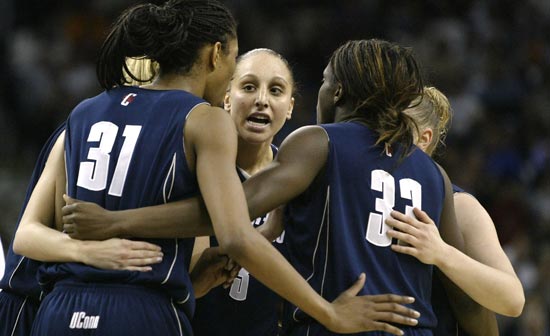
This research is the most accurate description of college sports’ participation patterns to date, shows that both men’s and women’s sports participation have increased over the past 25 years. It examines factors, including Title IX and athletic expenditure growth, impacting today’s college sports participation trends, which vary widely by sport. Changes in high school sports participation, rising health care costs, increased numbers of international students, and college recruitment are explored, as well as the implication of these participation trends on college sports’ diversity.
Read the Executive Summary here or the full report below.
Addressing the Health and Physical Activity Needs of Girls in the Boston Metropolitan Area
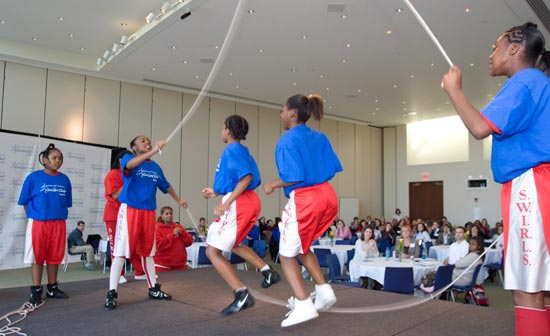
This report examines girls’ level of participation in sports and physical activity in the Boston metropolitan area and its relation to girls’ health. Girls’ sports and physical activity delivery systems, as well as public policy affecting the availability of such systems are reviewed.
Read the Executive Summary here or the full report below.
Who’s Playing College Sports: Trends in Participation
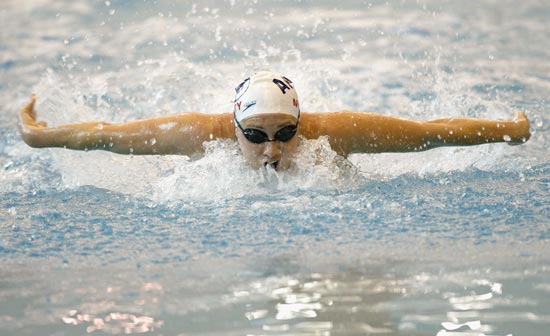
This study provides the most accurate and comprehensive examination of participation trends to date. We analyze data from almost every higher education institution in the country and utilize data and methods that are free of the shortcomings present in previous research on this subject. A 10-year NCAA sample containing 738 NCAA colleges and universities is examined over the 1995-96 to 2004-05 period. In addition, a complete four-year sample containing 1,895 higher education institutions is examined over the 2001-02 to 2004-05 period.
Supplemental Information
Trends in Participtation: All Institutions
The Status of Health and Physical Activity of Girls in Texas
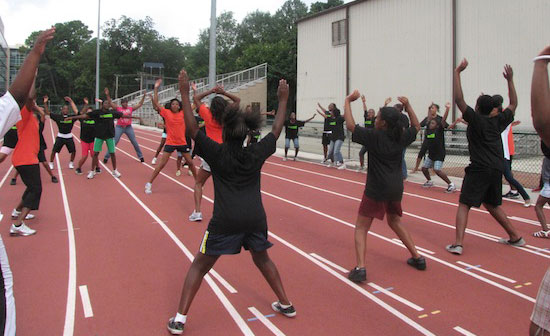
This report highlights key indicators of the status of both physical activity and health for Hispanic female youth in Texas with particular emphasis on the San Antonio metropolitan area; these indicators are then compared with national averages in order to contextualize the results.
